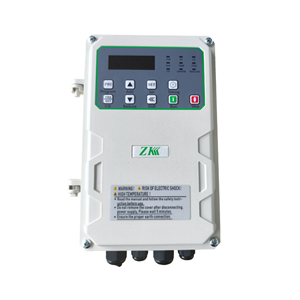Sensorless Control Technology in VFD Design
In modern industrial automation, Variable Frequency Drives (VFDs) play a crucial role in controlling the speed and torque of AC motors, greatly improving energy efficiency and process flexibility. Traditionally, precise motor control—especially for vector control and field-oriented control—relied on physical sensors (such as encoders or resolvers) to provide real-time feedback on rotor position and speed. However, the advent of sensorless control technology has revolutionized Variable Frequency Drives (VFDs) design by eliminating the need for these additional sensors, reducing cost and enhancing system reliability. This article explores the principles, advantages, and applications of sensorless control technology in Variable Frequency Drives (VFDs).
Principles of Sensorless Control Technology
Sensorless control, also known as sensorless vector control or sensorless field-oriented control, refers to methods that estimate the motor’s rotor position and speed using mathematical models and real-time measurements of voltage and current, rather than relying on physical feedback devices. The core of this technology lies in sophisticated algorithms—such as Model Reference Adaptive System (MRAS), Extended Kalman Filter (EKF), and Flux Observer techniques—that process the electrical signals from the motor terminals to reconstruct the necessary information for precise control.
The main steps involved in sensorless control are:
1. Measurement: The Variable Frequency Drives (VFDs) continuously monitors the stator voltage and current.
2. Estimation: Using motor parameters (e.g., resistance, inductance), the control algorithm estimates the rotor’s magnetic flux, position, and speed.
3. Control: The estimated values are used to generate appropriate PWM signals to control the inverter output, achieving desired speed and torque performance.
Advantages of Sensorless Control in Variable Frequency Drives (VFDs) Design
1. Cost Reduction: Eliminating physical sensors reduces hardware costs and wiring complexity, making the system more economical.
2. Improved Reliability: Without external sensors, the system is less prone to failures caused by sensor damage, wiring faults, or harsh environmental conditions.
3. Simplified Installation and Maintenance: Fewer components mean easier installation and less maintenance, especially in remote or challenging locations.
4. Enhanced Robustness: Sensorless drives are less affected by dust, vibration, moisture, and other factors that typically degrade sensor performance.
5. Compact Design: Without the need to accommodate sensors and their wiring, motor and Variable Frequency Drives (VFDs) packages can be more compact, which is valuable in space-constrained applications.
Applications of Sensorless Control Technology
Sensorless control technology is widely adopted in various industries and applications, including:
- Industrial Automation: Conveyor systems, pumps, fans, and compressors benefit from reliable and efficient sensorless Variable Frequency Drives (VFDs).
- HVAC Systems: Sensorless drives optimize energy use in heating, ventilation, and air conditioning by adjusting motor speed without the need for feedback devices.
- Elevators and Escalators: Smooth acceleration and deceleration are achieved without the complexity of installing position sensors.
- Electric Vehicles: Sensorless control is essential for robust and cost-effective traction motor drives.
- Renewable Energy: Wind turbines and solar pump systems use sensorless Variable Frequency Drives (VFDs) to adjust motor speed based on fluctuating input conditions.
Challenges and Limitations
While sensorless control offers numerous benefits, it also presents certain challenges:
- Low-Speed Operation: At very low speeds, the back-EMF (electromotive force) signal is weak, making accurate estimation more difficult. Advanced algorithms and motor design improvements are continuously addressing this limitation.
- Parameter Sensitivity: Accurate estimation depends on precise knowledge of motor parameters, which can change with temperature and load. Adaptive algorithms help mitigate these effects but may require careful tuning.
- Dynamic Performance: In highly dynamic applications that require rapid speed or torque changes, sensorless drives may not always match the performance of sensor-based systems.
Future Trends
With ongoing advancements in digital signal processing, artificial intelligence, and adaptive control algorithms, sensorless control technology is becoming even more accurate and versatile. Integration with IoT and cloud-based monitoring further enhances its capabilities, paving the way for smarter, more autonomous industrial systems.
Conclusion
Sensorless control technology has become a cornerstone of modern Variable Frequency Drives (VFDs) design, offering significant advantages in cost, reliability, and ease of use. By leveraging advanced algorithms to estimate motor position and speed, sensorless Variable Frequency Drives (VFDs) deliver precise and efficient control across a wide range of applications. As technology continues to evolve, sensorless solutions will play an increasingly important role in the future of industrial automation and intelligent energy systems.




